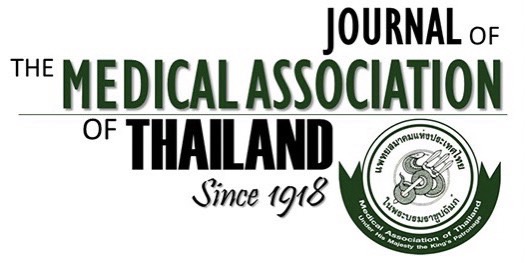Successful Retractorless Surgery: A Single-Center Experience in the Management of Deep-Seated and Skull Base Lesions
Kitti Suwanpratheep¹
Affiliation : ¹ Department of Surgery, Ratchaburi Hospital, Ratchaburi, Thailand
Abstract
Background: In contemporary neurosurgical practices, there is a trend towards minimally invasive procedures and the utilization of advanced radiotherapeutic interventions (Neurointervention) to mitigate the impact on brain tissue. One approach employed is the reduction or elimination of fixed retraction during surgery.
Objective: To investigate the success outcomes and complications associated with the use of retractorless technique in surgeries involving deep-seated brain and the skull base lesions in Ratchaburi Hospital.
Materials and Methods: The retrospective study conducted data collection from the patient medical records diagnosed with brain tumors and cerebral aneurysms that underwent surgical treatment for lesions in the deep-seated and skull base regions at Ratchaburi Hospital. The present study spanned between August 2014 and August 2022 including cases operated on by single neurosurgeon, utilizing both fixed retraction and retractorless neurosurgical techniques.
Results: Four hundred thirty-one patients were included in the present study, with 222 cases (51.5%) presenting with aneurysms, and the remaining 209 cases (48.5%) diagnosed with tumors, predominantly meningiomas. Within the tumor group, retractorless was conducted in 196 out of 209 cases, representing 93.8%. In the aneurysm group, retractorless was performed in 183 out of 222 cases, constituting 82.4%. The overall success rate of retractorless surgery was 87.9%. No intraoperative complications were found.
Conclusion: Performing retractorless surgery contributes to a reduction in brain tissue trauma. Employing instruments during surgery aids in retracting brain tissue replacing the need for fixed retractors. Additionally, wide dissection of the arachnoid membrane is performed, patient positioning is optimized to use gravitational forces, which facilitates the process, and cerebrospinal fluid drainage results in brain decompression. The combination of these strategies, along with selecting surgical approaches that avoid traversing through brain tissue, collectively enhances the success rate of retractorless surgery.
Received 5 April 2024 | Revised 1 July 2024 | Accepted 9 July 2024
DOI: 10.35755/jmedassocthai.2024.8.14023
Keywords : Brain edema; Brain retraction injury; Retractorless surgery; Minimally invasive surgery; Skull base
All Articles
Download



